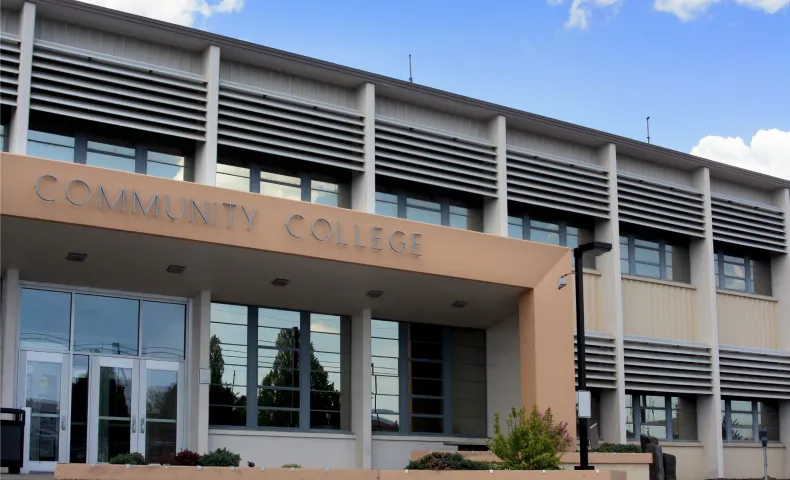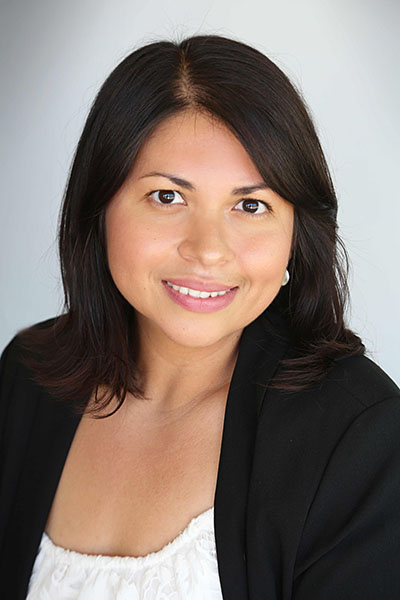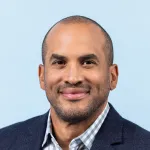
Delivering on the Promise of Higher Education
California Community Colleges is the largest system of higher education in the nation. It includes 116 colleges serving 1.8 million students per year. As interim chancellor, Daisy Gonzales, Ph.D., has been overseeing efforts to allocate expanded investments by the state in housing programs and other student supports, alongside broader system reforms.
 At the Haas, Jr. Fund, we are working with partners like Dr. Gonzales to make a college degree more affordable for more Californians. In a state where the cost of living for college students has increased by over 80% in the past 40 years, too many young people are struggling to keep up with the costs of housing, food, and other necessities while staying in school. Across California, African American and Latino students are more likely than their white peers to borrow to pay for their college education—and in larger amounts.
At the Haas, Jr. Fund, we are working with partners like Dr. Gonzales to make a college degree more affordable for more Californians. In a state where the cost of living for college students has increased by over 80% in the past 40 years, too many young people are struggling to keep up with the costs of housing, food, and other necessities while staying in school. Across California, African American and Latino students are more likely than their white peers to borrow to pay for their college education—and in larger amounts.
Despite the scale of the challenge, the Haas, Jr. Fund shares Dr. Gonzales’ belief in the promise and possibility of higher education as an important equalizer and an engine of a thriving democracy. As a community college graduate and a former foster youth, Dr. Gonzales recently talked with us about the transformative power of investing in public systems to support all Californians. She also shared how additional investment and further action are needed to make college truly affordable and accessible for all students.
Robert Joseph: What inspired your commitment to helping young people attain a college degree?
Dr. Gonzales: My journey is actually very similar to the foster youth, low-income, and first-generation college students we serve at California Community Colleges. I come from a childhood where there was a lot of violence. And earning an education literally saved my life. I went to four different community colleges during my own higher education journey. And now I have this incredible opportunity to give back to a system that made me who I am.
I want to help do for others what my teachers and mentors did for me. They helped me turn pain into courage and strength. Today, we need the courage to transform from the inside out all our public institutions, including higher education in California. For California Community Colleges, that means creating a more equitable, student-centered system that supports our 1.8 million students to find their place in the world and thrive.
Joseph: As a funder focused on ensuring college success for young people living at the margins, we see community colleges as an essential cornerstone of the higher education system. Can you share more about the students your system serves?
Dr. Gonzales: We serve the majority of college-going Californians; 51% of all California State University students started their educational career at a community college, along with 29% of University of California students. And our students are incredibly diverse: 71% are students of color; 43% are first-generation college students; 73% are over the age of 20; 76% are working more than part time; 46% are low-income students; and 20% have one or more dependent.
We have hardworking, resilient students who are committed to advancing their education and contributing to the economy. And we want to support them in every way we can.
Joseph: California has made some important investments in higher education this year. Is it enough?
Dr. Gonzales: It was a phenomenal year for California Community Colleges, and we are so grateful to the governor and the legislature for this support. It’s encouraging that people see the impact that community colleges can have on the state and on the lives of Californians.
Yet while there were a lot of new investments, there are still a lot of students that are excluded. The majority of our students, including as many as 60% during the pandemic, face food and housing insecurity. And sometimes students are excluded from financial aid and other supports because of their age, where they live, or the career program they are in. Helping us meet the unmet needs of all our students will always be critical.
Joseph: College affordability is the number-one priority for the Haas, Jr. Fund’s College Success program right now. What key issues should we and our partners be looking at from an affordability perspective?
Dr. Gonzales: I think we’re still having siloed conversations about how we tackle college affordability. The issue isn’t only Cal Grant reform, as important as that is; it is also about how we address the social determinants of success for our students, including their financial stability, physical and mental well-being, and support networks.
And it’s also about making the most of online education, particularly in a large state like California. Many people live far away from our campuses, and a lot of them don’t have broadband access. That is an accessibility and an equity issue we need to address if we want our campuses to be student-centered and serve Californians who need higher education opportunities.
Joseph: What additional issues are you focusing on as you work to improve college access and affordability?
Dr. Gonzales: There are many working learners that we are leaving behind right now. In fact, part of the impetus for creating our fully online college, Calbright, was to try and do a better job reaching more working learners and adult learners who do not have a degree or credential. That’s a really important population for the state if we’re going to meet the governor’s goal of 70% of Californians having a postsecondary education by 2030.
And there are other populations we need to do more to reach as well, including veterans and formerly incarcerated Californians. For me as a leader, we can’t say that we serve California when we are not serving all Californians.
Joseph: How can philanthropy partner with community colleges to support the work you’ve described?
Dr. Gonzales: So many of our students struggle to pay for housing, food, childcare, technology, textbooks—all the expenses that represent the total cost of higher education. We need partners willing to connect systems and expand access in ways that provide students with the resources they need with urgency and with limited barriers. We also need support for research and storytelling—we want to keep making a powerful case for the positive impact of a community college education on students, communities, and the state. That helps with our advocacy for lasting, structural reforms.
Another important opportunity is seeding innovation like competency-based education, work-based learning, credit for prior learning, and innovations in learning modalities. We need to support good ideas at every level that can point the way to college affordability and college success for everybody.
At California Community Colleges, we have increased the number of degrees and credentials we offer, and we’ve increased transfers to a record level. But we’re still not seeing our equity gaps close as fast as we want. That’s going to take more investment—and more partners who seek to empower the student voice and build systems that treat people with dignity and respect.
